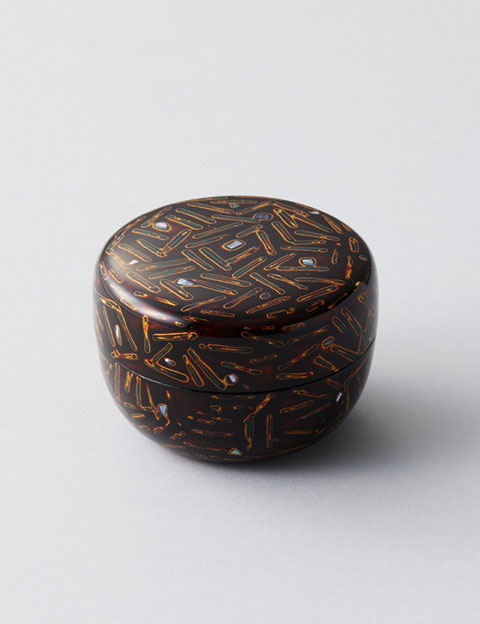WAKASA Nuri (Lacquerware)

Wakasa lacquerware dates back the beginning of the Edo era (1600-1868), when lacquerers of the Obama clan near Wakasa Bay started decorating their work with ocean-inspired designs, borrowing techniques used in China.
Several advancements led to the creation of a technique called Kikujin-nuri, which was further developed into Isokusa-nuri. In the middle of the 17th century, a method still used today was perfected in which decorations using eggshell and gold or silver leaf are applied to the lacqerware. The feudal lord at the time declared it as Wakasa lacquerware and encouraged lower-ranking warriors of the Obama clan to take up the craft as an occupation, an act that led to the production of many refined and beautiful designs.
Marine elements are depicted using eggshell, mother-of-pearl, pine needles, Japanese cypress needles and rapeseed. Gold leaf is also applied, providing a star- or gemstone-like glitter. Being almost exclusively handmade, no two objects are ever the same. Products made today include chopsticks, cups and flasks for sake, tea ceremony items, vases and boxes.
Feature
In Wakasa lacquerware, special decorative motifs representing oceanic elements are created using eggshell, limpet shells, pine leaves, cypress leaves, rapeseed and more. These are then embellished with gold leaf that glitters like stars or gemstones. Because these items are handmade, no two are the same.
How to make
First, blue, yellow and red lacquers studded with limpet shells and eggshell are applied in layers, and then gold leaf is added. Next, multiple layers of fine lacquer are applied before being polished with a whetstone and a special kind of charcoal to produce a glossy finish. Finally, a top coat is applied to the plain areas. Because these items are made over the course of a year, they possess a sturdy elegance that is unaffected by heat or humidity.

